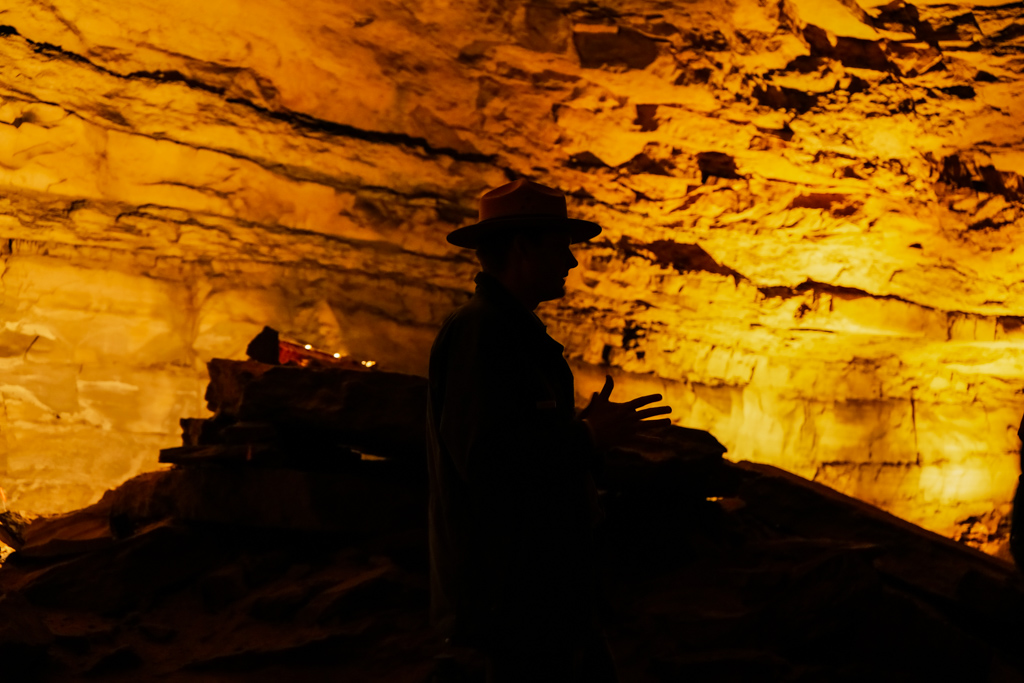We visit one of the most underrated national parks in the system – Mammoth Cave National Park! Why it ranks so low, we don’t know, as it’s the longest known cave system in the entire world, a UNESCO World Heritage Site, and an International Biosphere Reserve! Doesn’t that information just make you want to go spelunking immediately?!
Spelunking : the exploration of caves, especially as a hobby.
Location, Location, Location!
Mammoth Cave National Park is 85 miles from Louisville, Kentucky, and 93 miles from Nashville, Tennessee. The nearest airports are located in Bowling Green, Nashville, and Louisville. We stayed in Bowling Green during our visit and highly recommend it! Though, there are also the surrounding small towns of Cave City, Horse Cave, and Park City. Just note that the national park observes Central Time while Louisville observes Eastern Time!
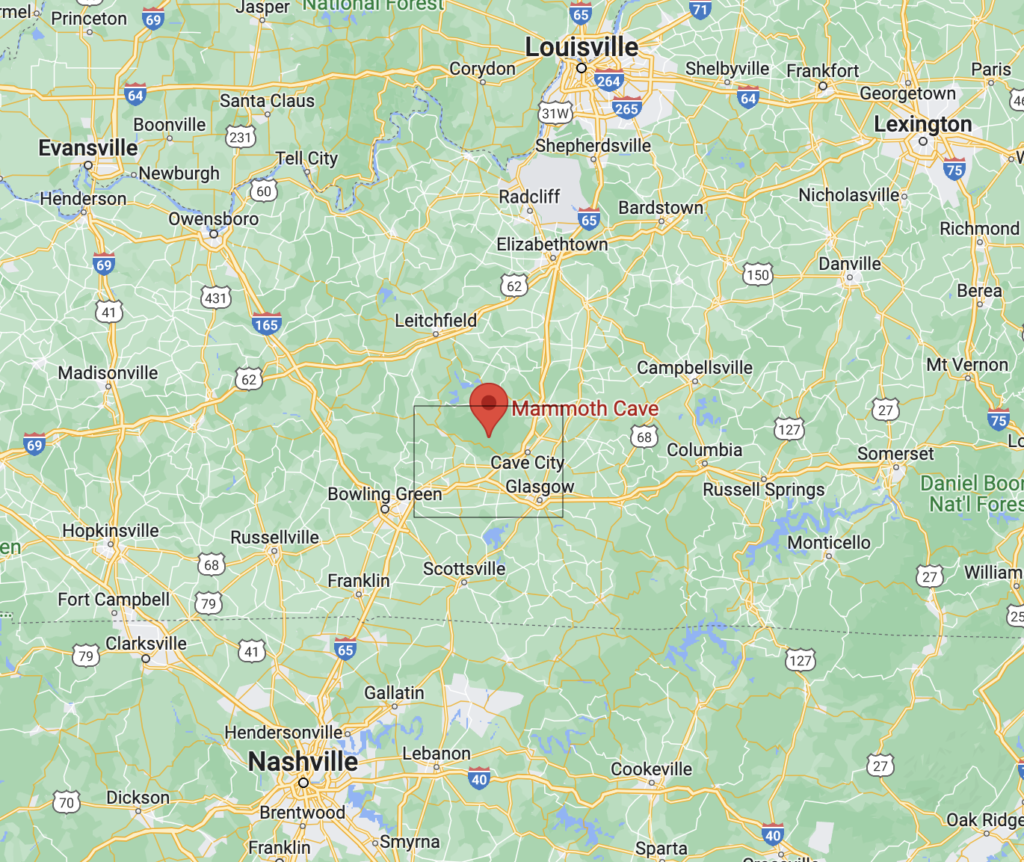
How We Booked
We visited Mammoth Cave National Park in the shoulder season of early spring. Many national parks have implemented a reservation system for tours and high traffic areas of the parks. So, while there is no entrance fee for Mammoth Cave National Park, you must pay for and reserve your spot for the cave tours. All you need to do is create an account on Recreation.gov to secure your tickets, and you’ll be able to use that account to book future reservations at other national parks!
Note: If you have the America the Beautiful Annual Pass, present your card in person to have half the price of your tickets refunded!
Which Cave Tour is Right for You?
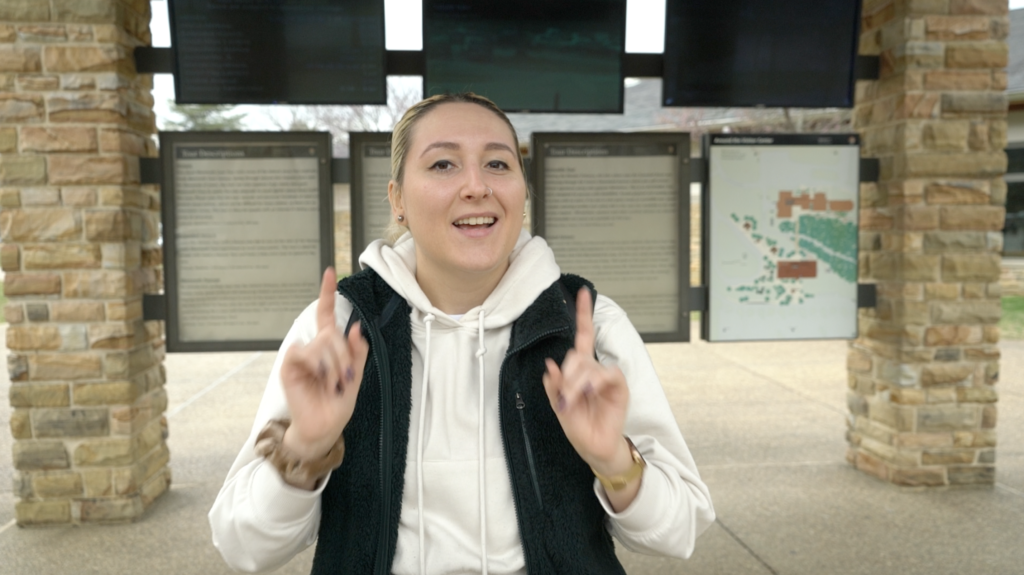
Mammoth Cave National Park offers several cave tours of different distances, difficulty, price, and lengths of time. However, if there’s a particular tour you’re hoping to do, make sure you’re visiting the park at the right time of year because different selections of tours are offered throughout different seasons. If not, it’s more reason to come back! See the full list here.
If possible, we would encourage booking more than one tour during your time in the park so you get to see as much of the cave as you can! Trust us – you’re gonna keep itching to get underground. But if you plan to spend time above ground, make sure you check out our other post on The Best Hiking at Mammoth Cave National Park.
During our short time at Mammoth Cave, we embarked on two separate tours: the Grand Historic Tour and the Cleaveland Avenue Tour.
Grand Historic Tour
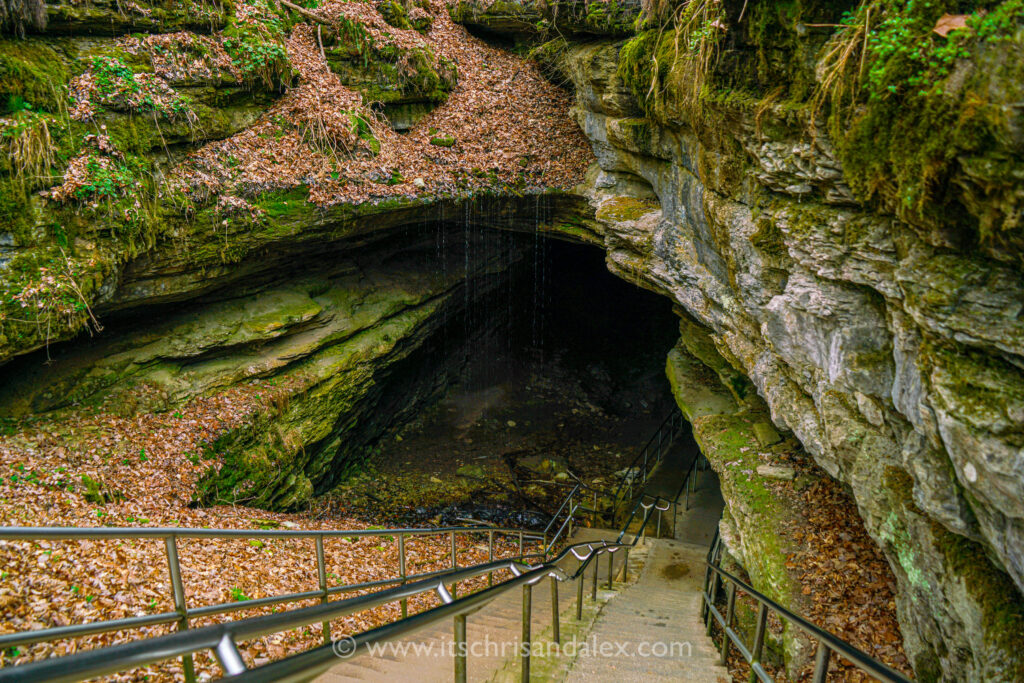
The Grand Historic Tour is a 4 hour, 4-mile-long walking tour of Mammoth Cave’s most iconic landmarks and is truly a crash course into the extensive history of the national park.
If you have the time and the ability, we highly recommend taking the Grand Historic over the regular, 2-hour, 2 mile Historic Tour. It includes everything you would see on the Historic, Extended Historic, Gothic Ave, Star Chamber, and River Styx tours, and the main parts of the Mammoth Passage, Violet City, and Discovery tours. You get a more intimate group and far more bang for your buck. Our Grand Historic Tour group was around 40 people, while the Historic Tour groups we saw had over 100 people per tour! We paid $35 per ticket.
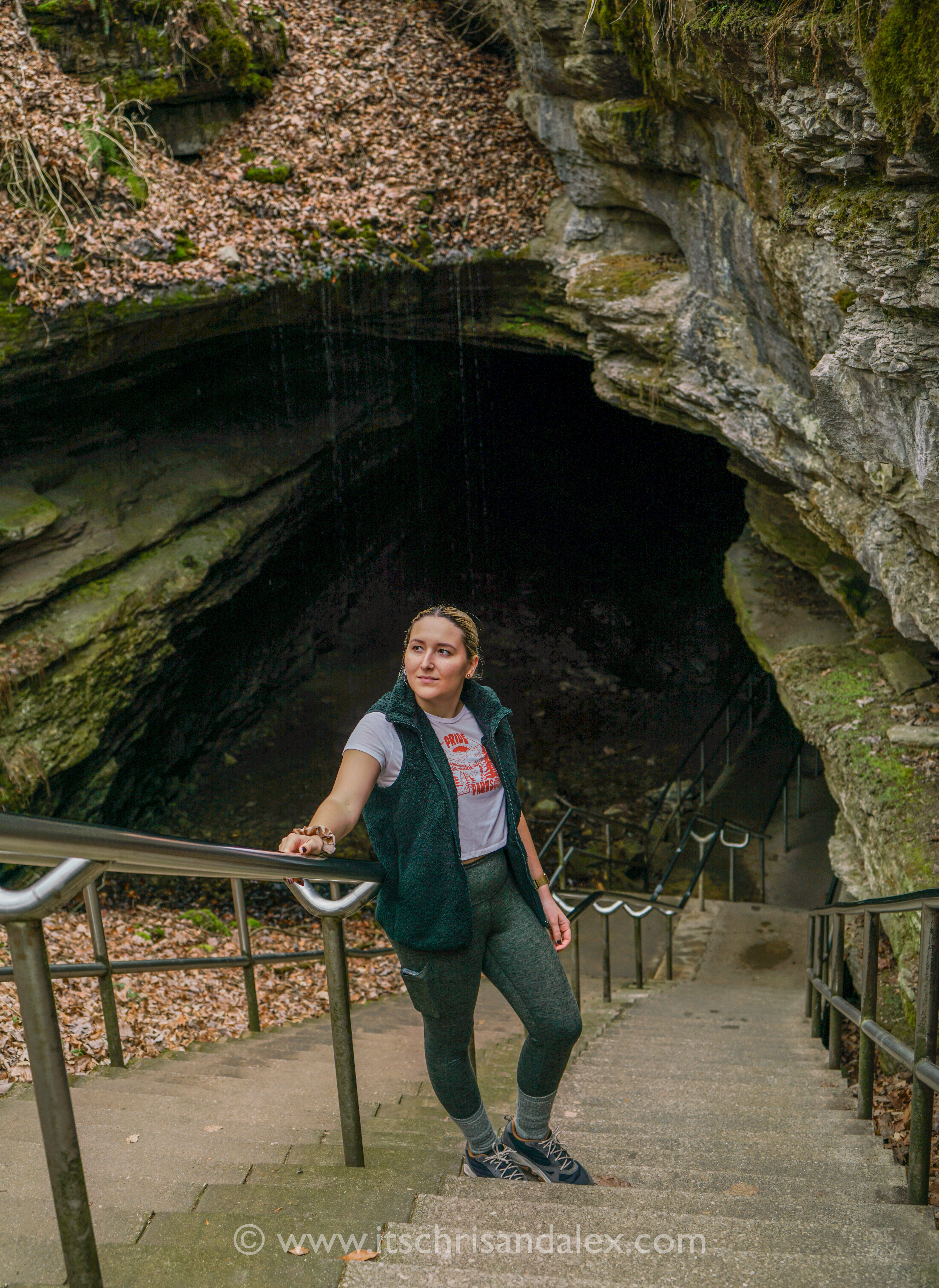
Your adventure begins at the Historic Entrance, just as countless others before you. The following list is some of what you’ll encounter on this tour.
The Rotunda
The Rotunda is really the first big sight to behold on your tour after walking down Houchin’s Narrows. No matter how many photos or videos you’ve seen online, it’s here that you begin to appreciate the scale of Mammoth Cave.
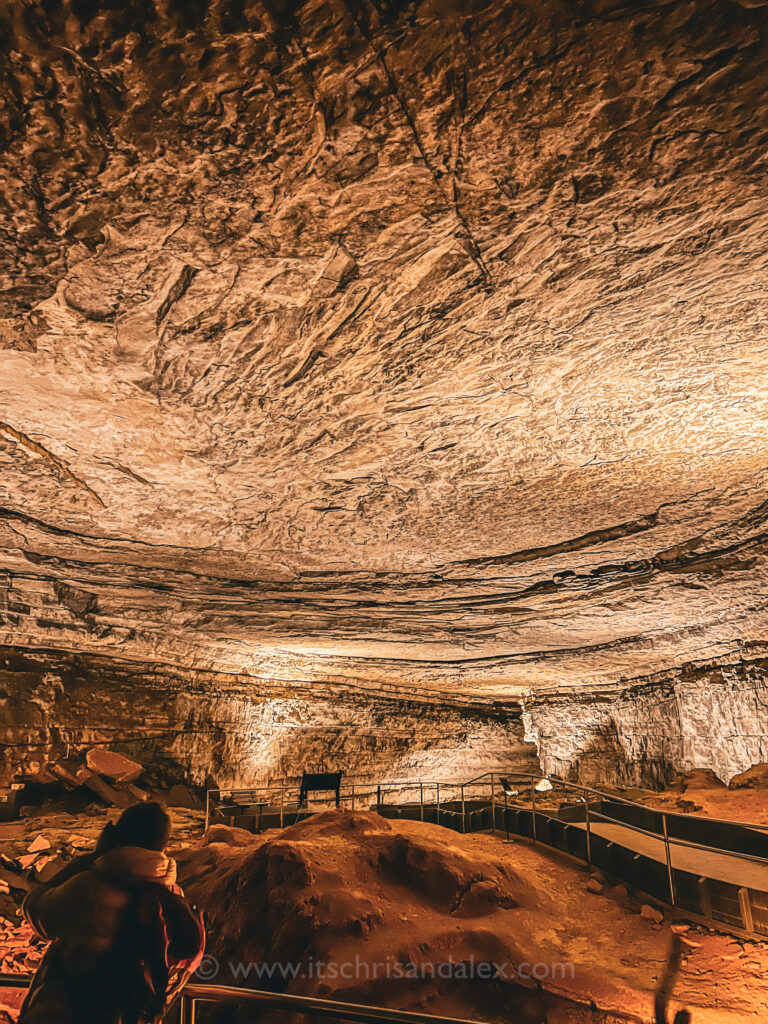
Gothic Avenue
One of the parts of Mammoth Cave where you can see traditional cave features like stalactites and stalagmites (bonus points if you can tell them apart). Prepare to see sights like the Devil’s Chair and Bridal Altar because, yes, they used to hold weddings in the cave! Look up to find 8,000 names written onto the ceiling by candle smoke. It was one of the creative ways slave guides came up with to earn tips from tourists in the caves. Many of them are backwards because they used a mirror upon the ground to write the names!
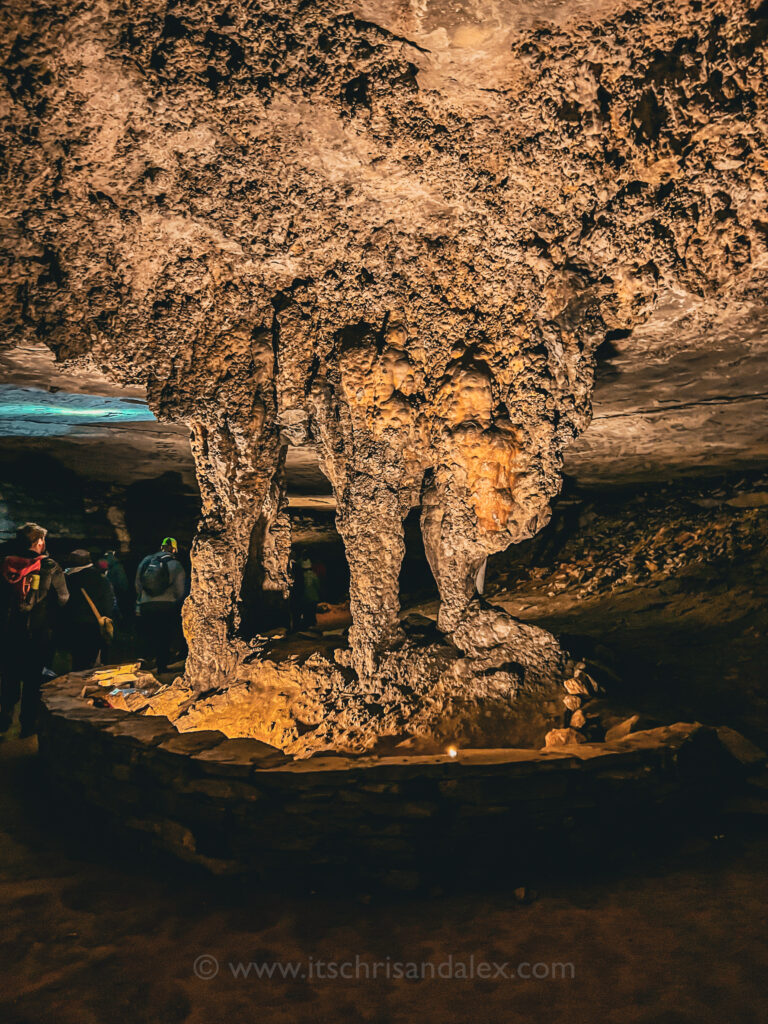
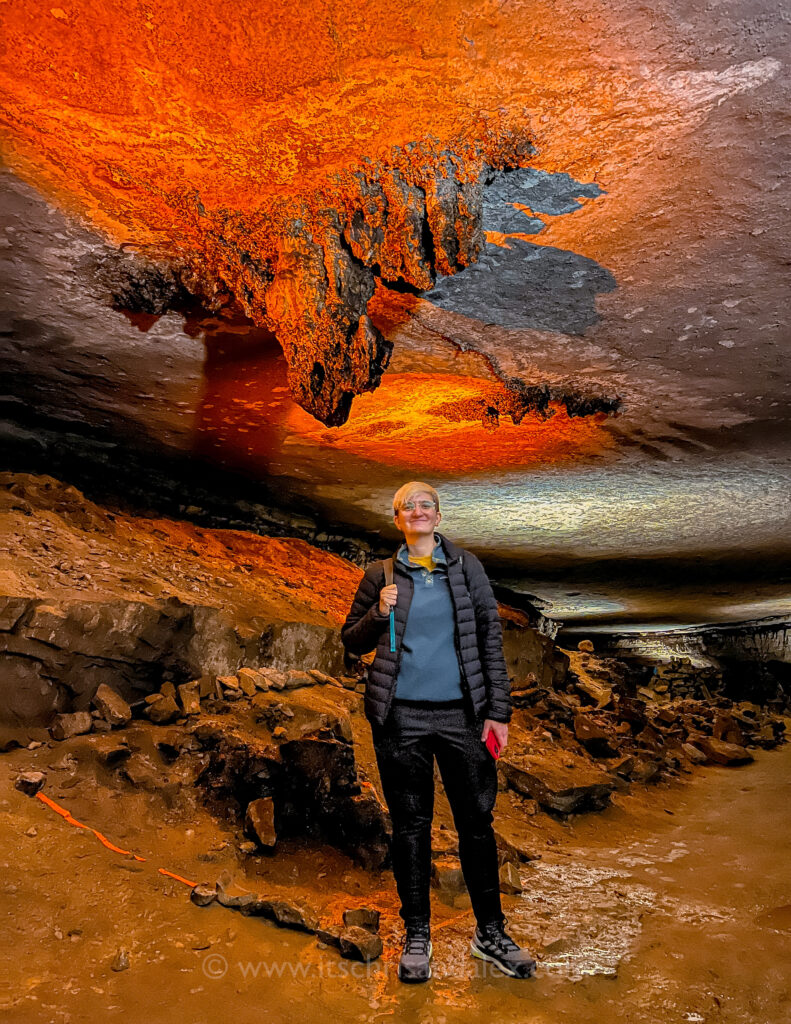
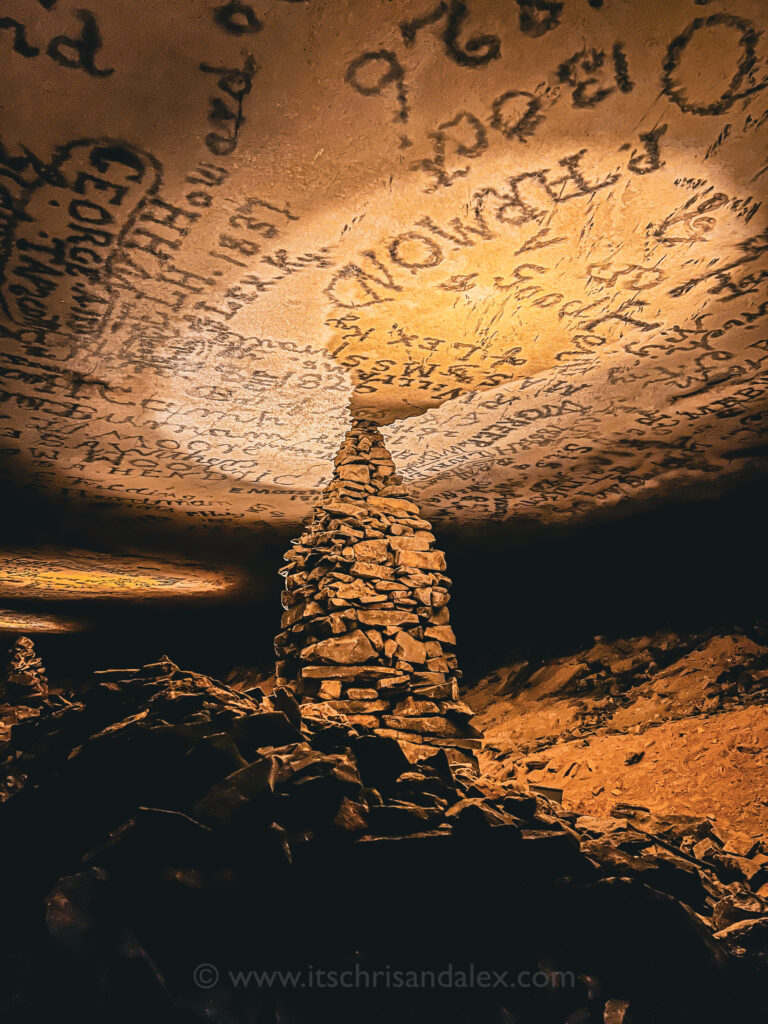
Star Chamber and Tuberculosis Hospital Ruins
You can read more about the history of this section of Mammoth Cave in our other article discussing the cave’s history. A fun fact about how the Star Chamber got its name had to do with another way guides would earn tips from tour-goers. They would offer to throw a chunk of limestone in order to create a “star” in the soot-covered ceiling as a symbol of a couple’s love.
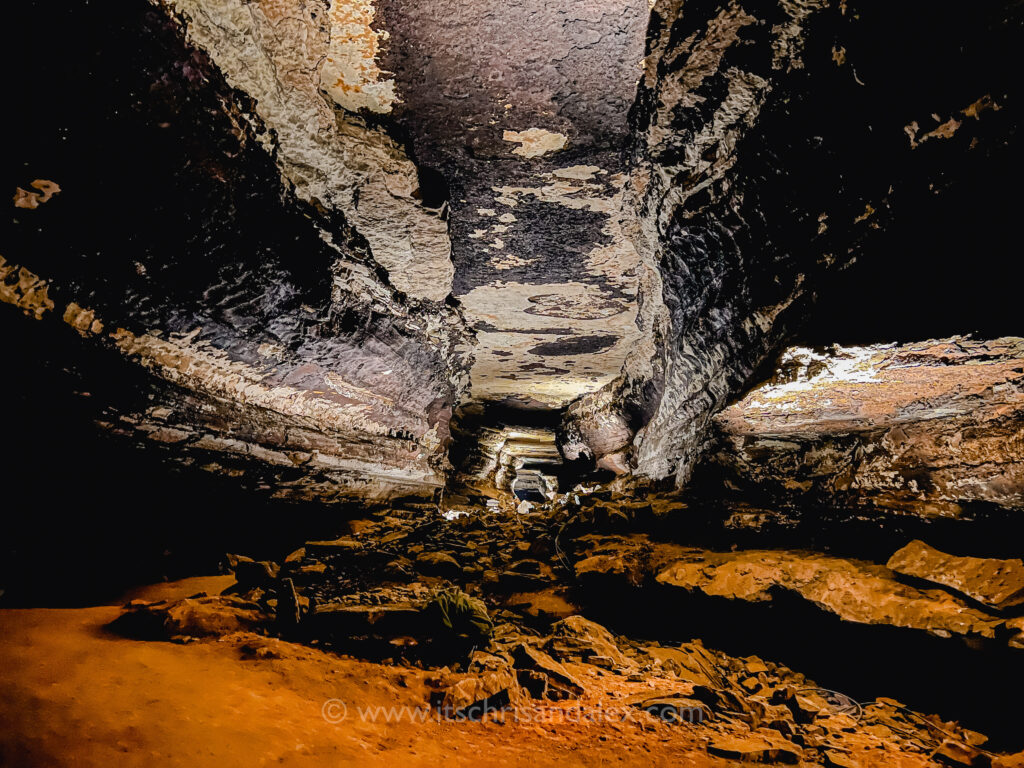
Giant’s Coffin
A huge piece of limestone that really does look like a coffin made for a giant! It weighs a hefty 1,000 tons – the weight of three 747 Jets.
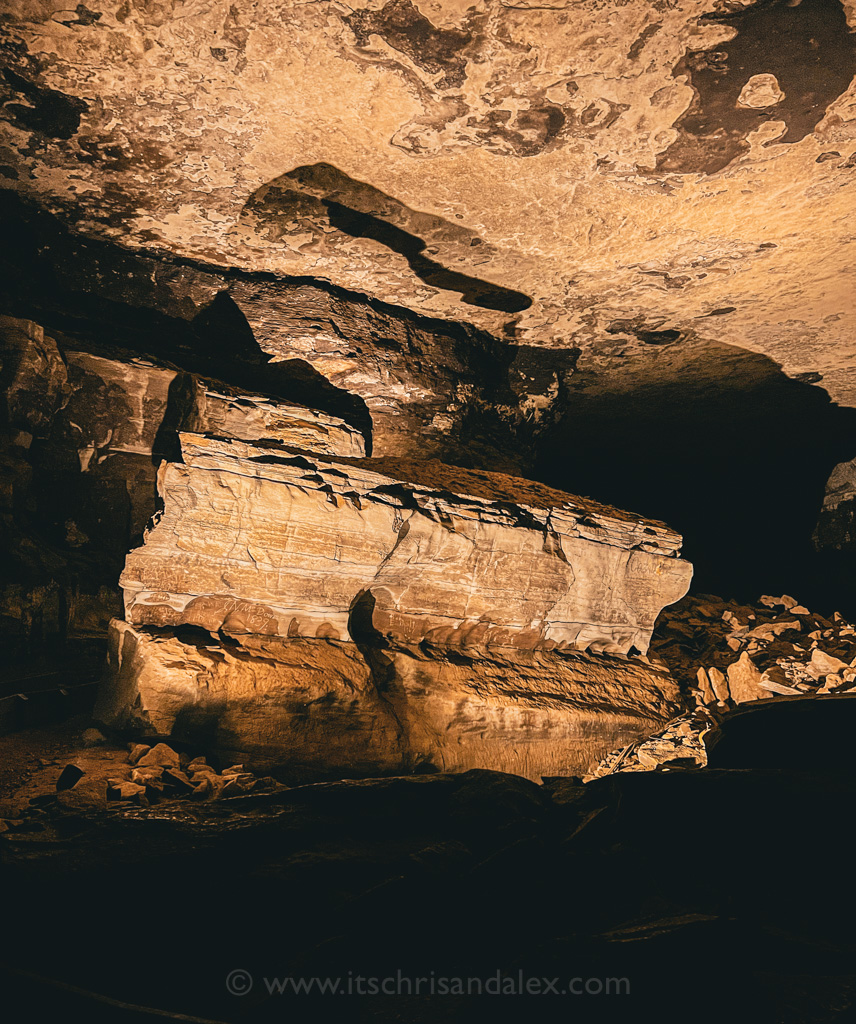
Bottomless Pit
The only bottomless pit in the world… that you can see the bottom of! Nowadays, we know that it’s 105 feet deep, but back when Stephen Bishop was exploring and leading tours, the light of his lantern could not cast down to the bottom. When trying to throw in an object he didn’t hear it hit the bottom because it was covered in sand. Leaving it to appear a bottomless mystery!
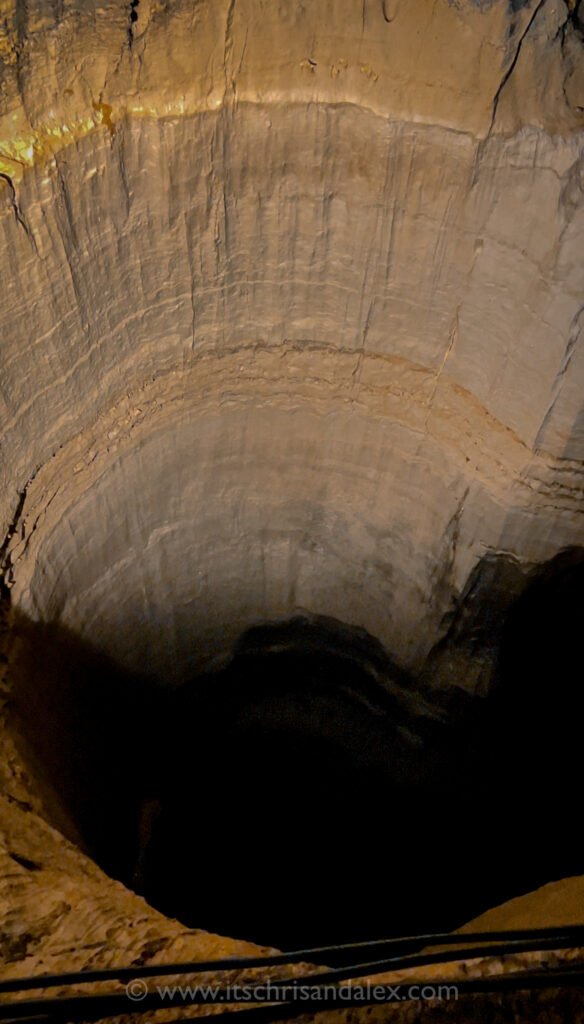
Fat Man’s Misery and Tall Man’s Agony
As the name crudely implies, this part of the cave is more of a squeeze in terms of width but also height! A forewarning – it’s the most claustrophobic part of the tour and there were definitely tall people in our group that busted out some impressive limbo moves. At 5’6” and 5’8”, we’re happy to report that it wasn’t too back bending, but keep in mind, the footpath is a tight squeeze to follow as you twist and turn.
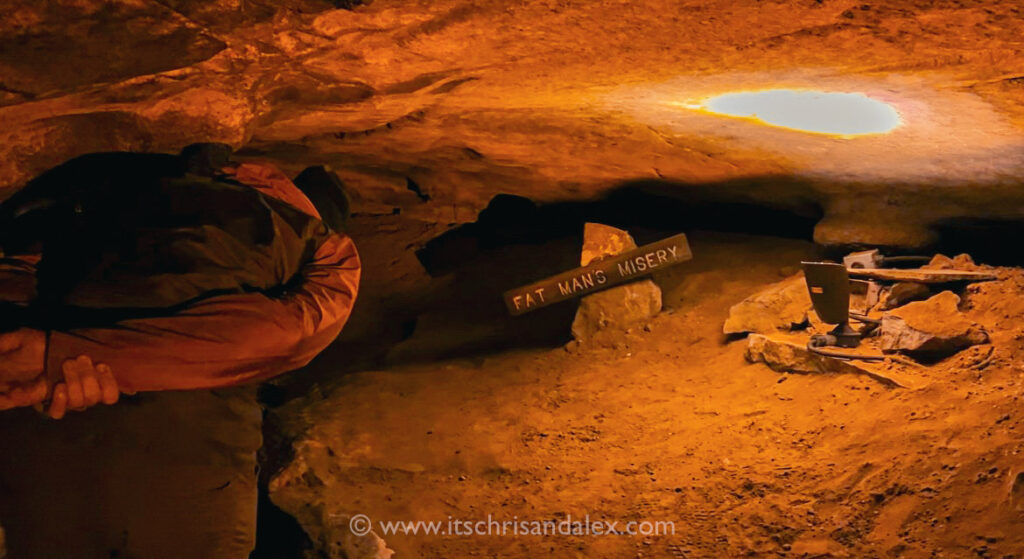
Great Relief Hall
After you endure Fat Man’s Misery, you empty out into the Great Relief Hall. It’s a great relief for two reasons – 1) because you can finally stand up straight again 2) because you can relieve your bladder or your bowels! Who knew that a cave bathroom would be one of the most exciting sights on the tour for us?! You have to take this tour just to be able to spout that as a fun fact for the rest of your life.
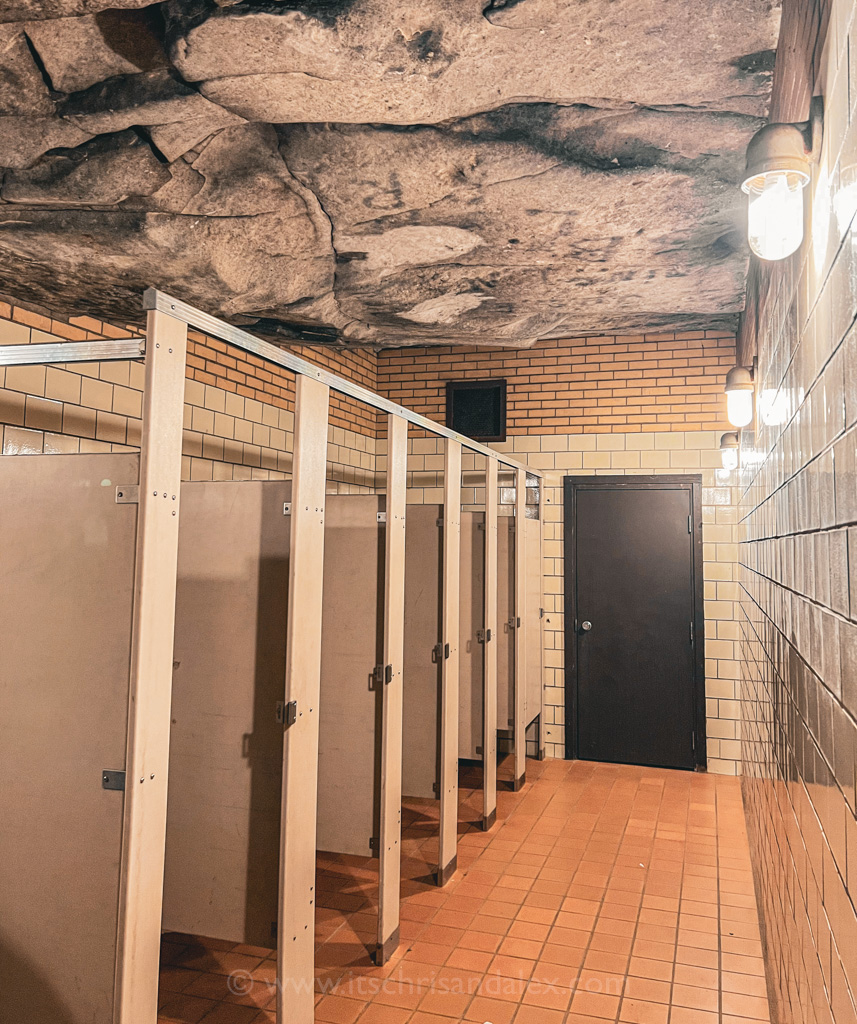
River Hall
Here you learn about how Mammoth Cave was naturally created and carved by flowing water. The scallop indentations on the ceiling inform how long the water flowed as well as the direction. What’s fascinating is that this section of the cave has been known to flood and at times is underwater! Because of this, they stopped making efforts to light the area so we were handed LED lanterns to light our way for the next portion of the tour.
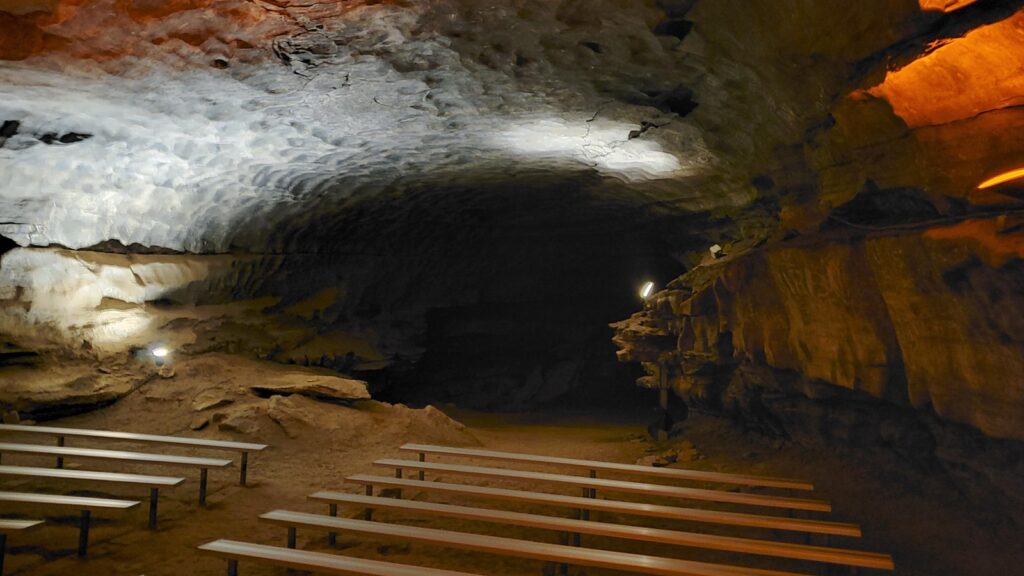
River Styx
Chris’ favorite beyond favorite part of the tour. You’ll descend deep into the cave with lanterns and get to see into the underground River Styx. The blue and green water is so stark and transparent against the darkness of the cave. Although not common, it’s sometimes possible to catch a glimpse of the eyeless cave fish from above!
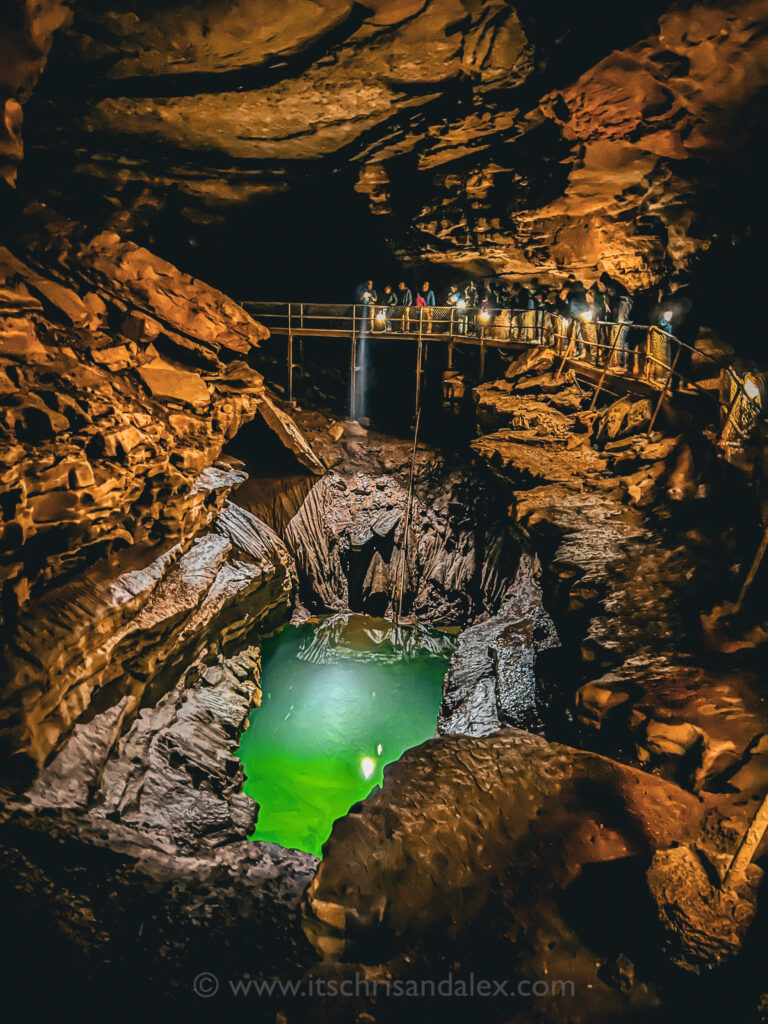
Then you continue to the start of Lake Lethe and get to experience what total darkness is like after everyone turns off their lanterns. Definitely save your pent-up frustrations for this leg of the tour, because yelling into the void has never felt so good. Unfortunately, there are no longer any underground river or lake tours offered to preserve the endangered cave crayfish that habitate there.
Mammoth Dome, The Tower, and Ruins of Karnak
Taller than both the State of Liberty and Niagara Falls, Mammoth Dome is an icon in its own right. Alex was most excited to see the flowstone referred to as Butterscotch Falls, with its glossy and curtain-like appearance. Note that you’ll have to climb up 155 stairs to ascend back up!
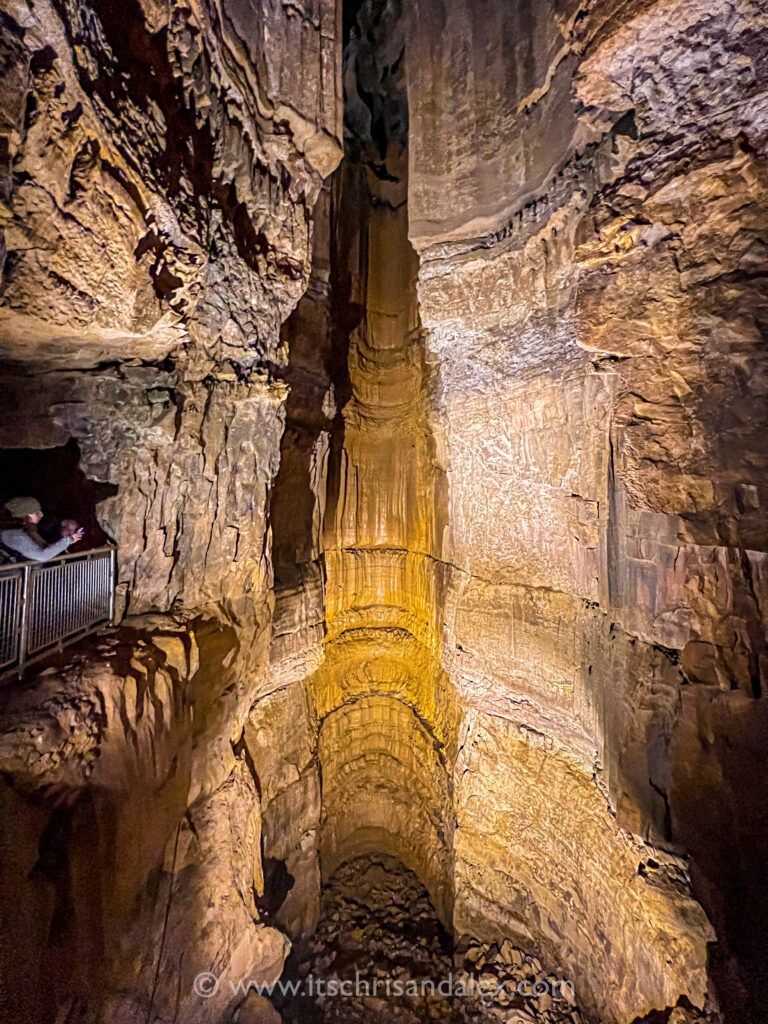
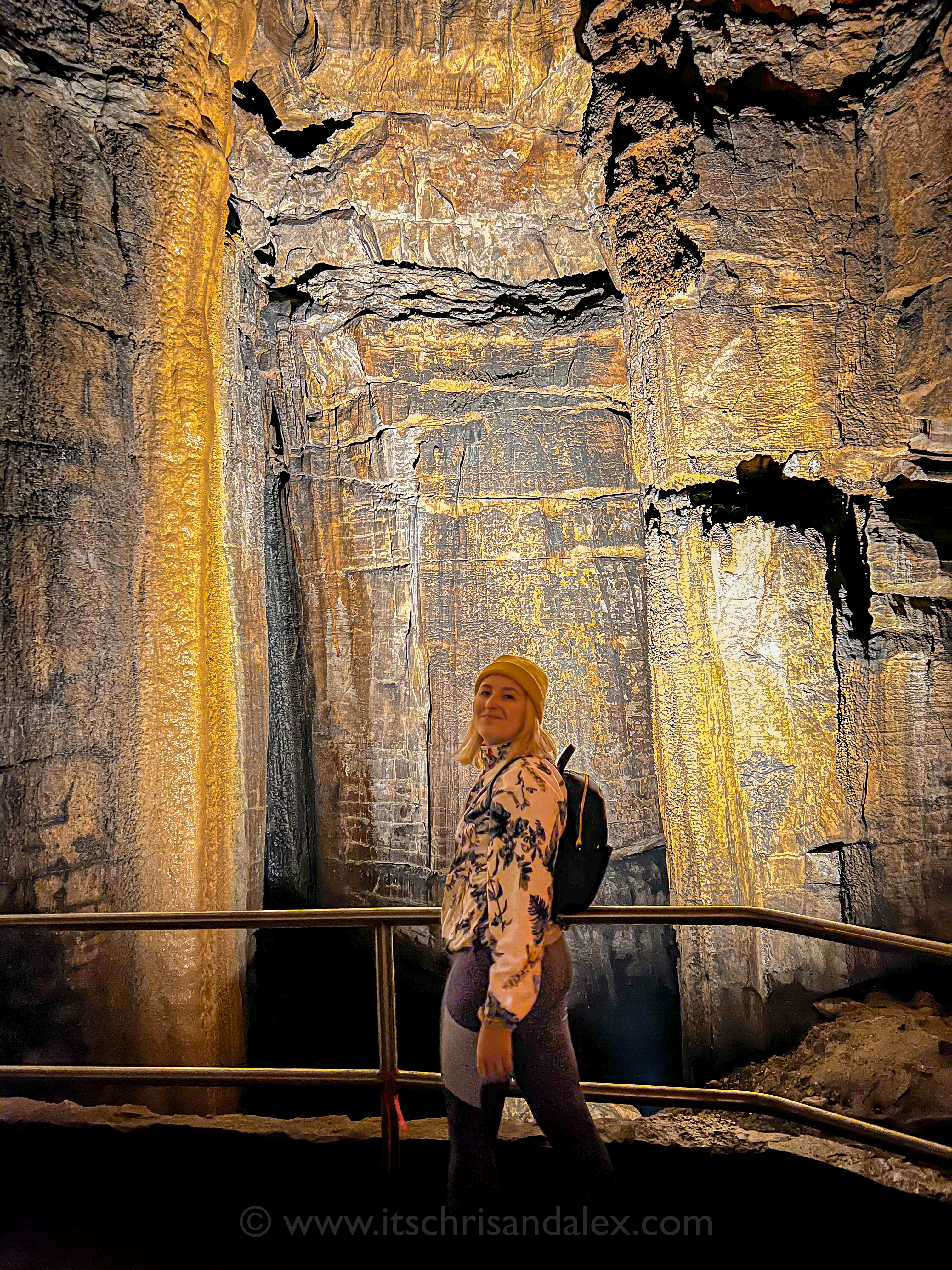
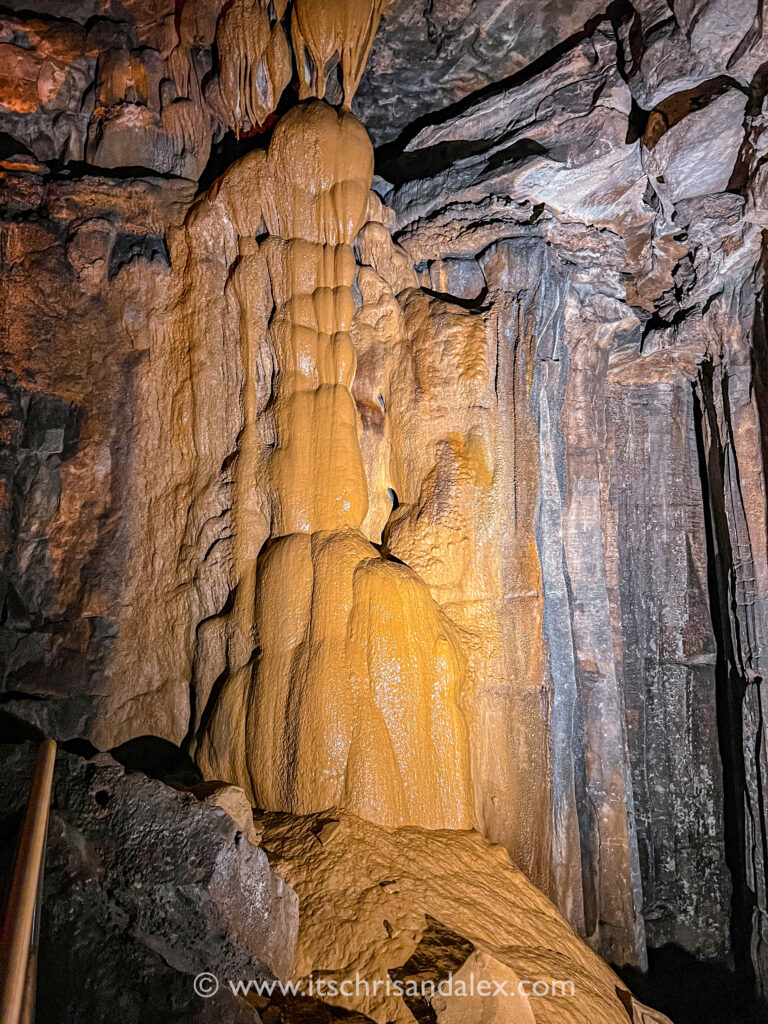
Difficulty
As a result, the Grand Historic Tour can be ranked as “strenuous” in terms of difficulty, given the distance and the number of stairs climbed (640 to be exact). However, we personally would not consider it strenuous. There were often benches to sit upon at several of the sites and having the bathroom access midway was also helpful.
Cleaveland Avenue Tour
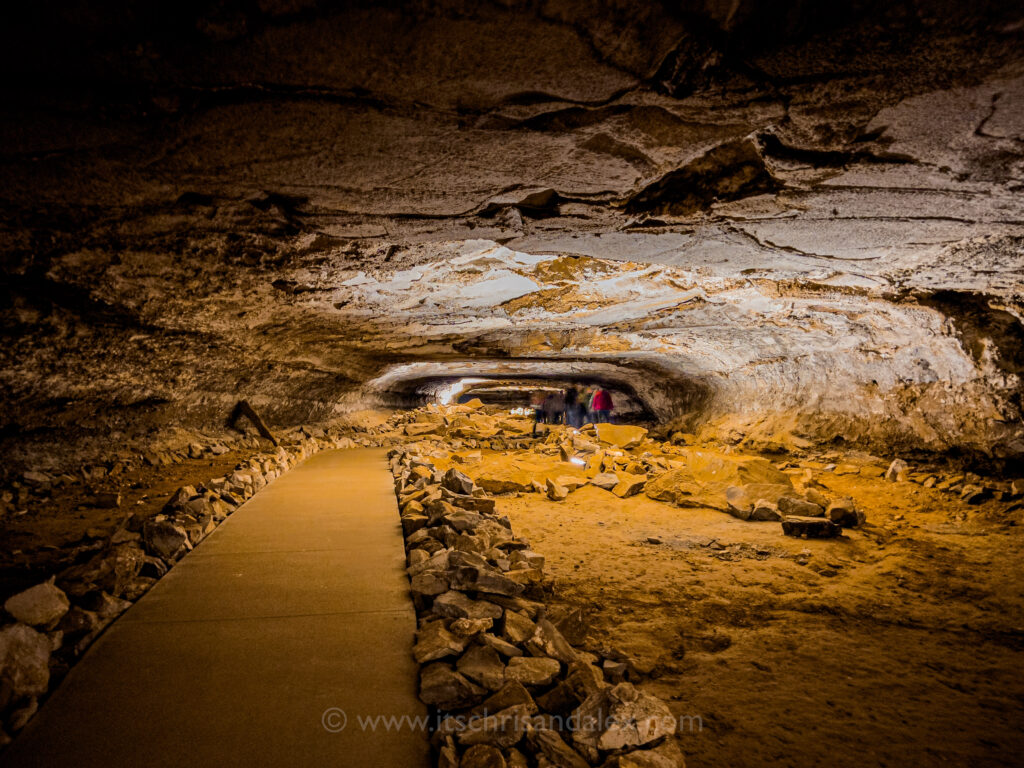
The Cleaveland Avenue Tour is a 2 hour, 1 mile, 200 stair walking tour of a unique section of Mammoth Cave. In fact, it is actually the same route as the Accessible Tour, except an elevator ride replaces the stairs! This tour was much more illuminated and wider than the Grand Historic Tour. The main attractions of Cleaveland Avenue are its tube-shaped passages and walls of the mineral, gypsum. As two people who are very interested in geology and gems, we loved this tour! We paid $22.00 per ticket.
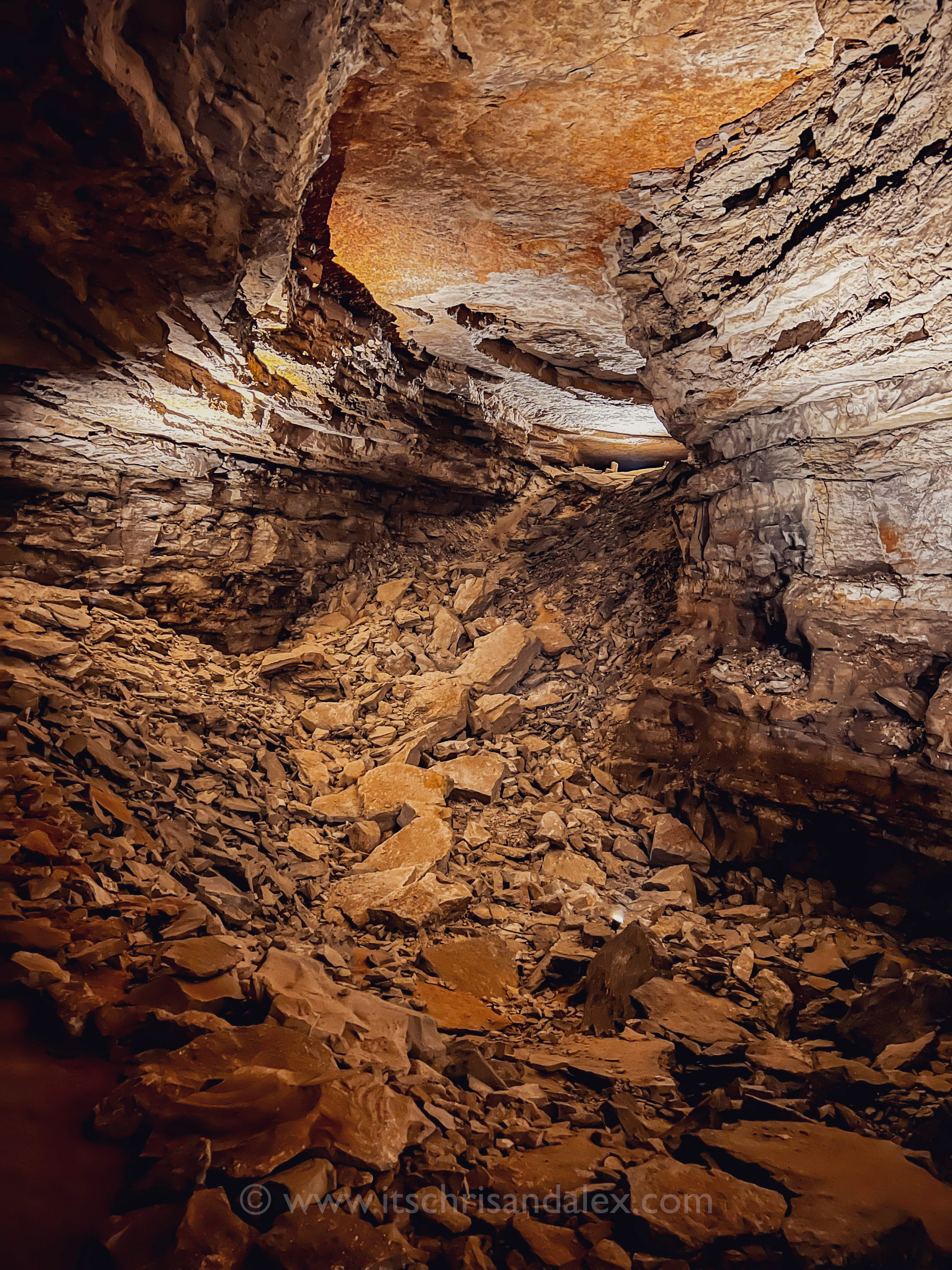
First, you start off your 2 hour tour by being bused to a separate, man-made entrance to the cave. Then you descend into Mammoth Cave by conquering 200 steps (mind your head again!) and entering an impressive entry canyon of limestone with a sandstone ceiling. Your tag-team of park rangers guides you to the trail, where plumes of curling gypsum appear on the walls and ceiling along the way. You’ll see such highlights as:
Gypsum
Gypsum is said to have lined the walls and ceilings of Cleaveland Avenue since its discovery. In its undisturbed state, it was said to have hung down like mineral sinews that would dance with a breeze. That did not last long after mining efforts and giving tour-goers gypsum souvenirs. Today you can still see gypsum flowers curling and the walls glittering with it. Gypsum is a mineral that is used in many materials like drywall, plaster, fertilizer, and food additives.
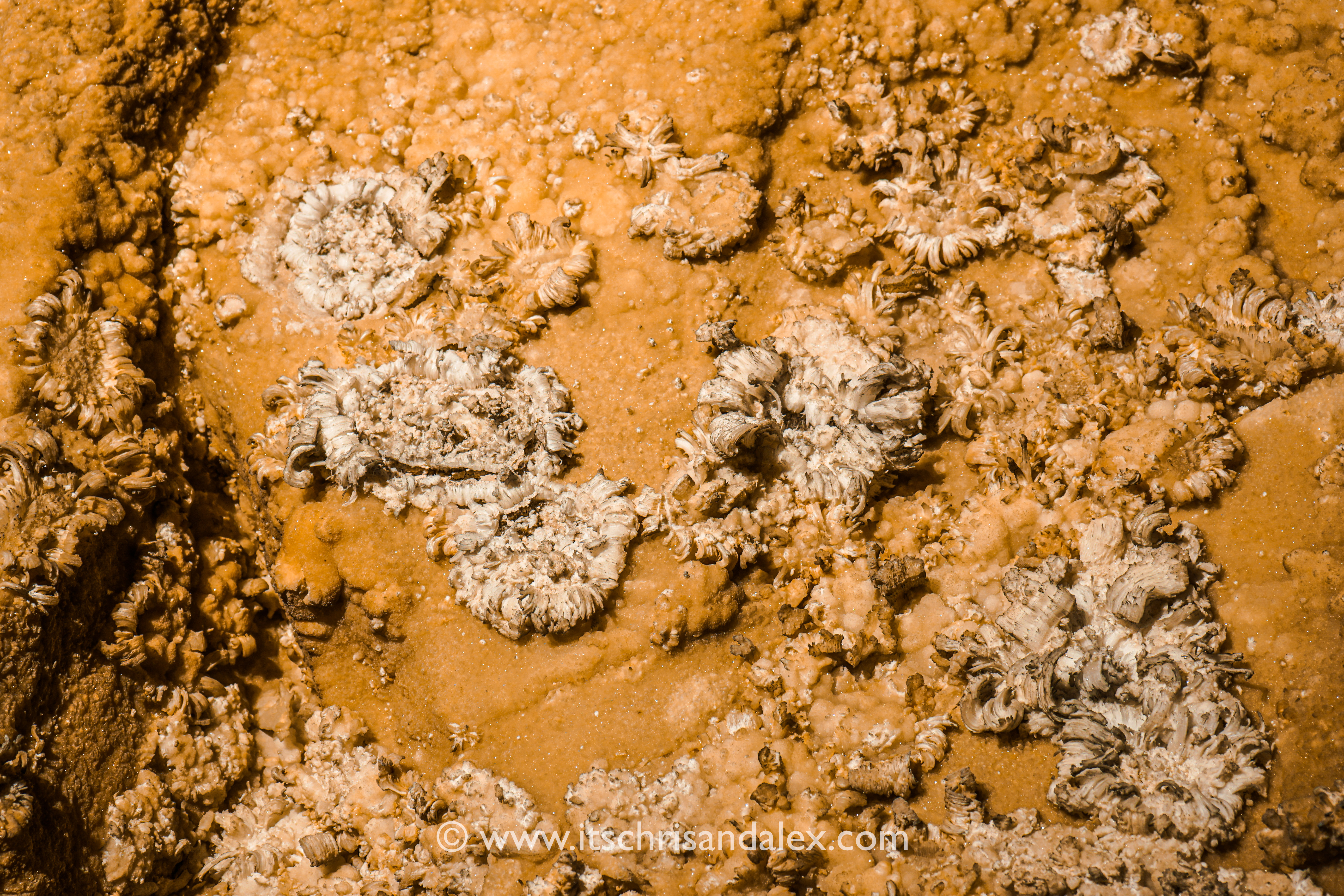
Cleaveland’s Cabinet
An area of the cave where there is actually a hollow passageway beneath your feet! There’s an alcove where you can stomp or sing if you feel so inclined, and you can hear it reverberate!
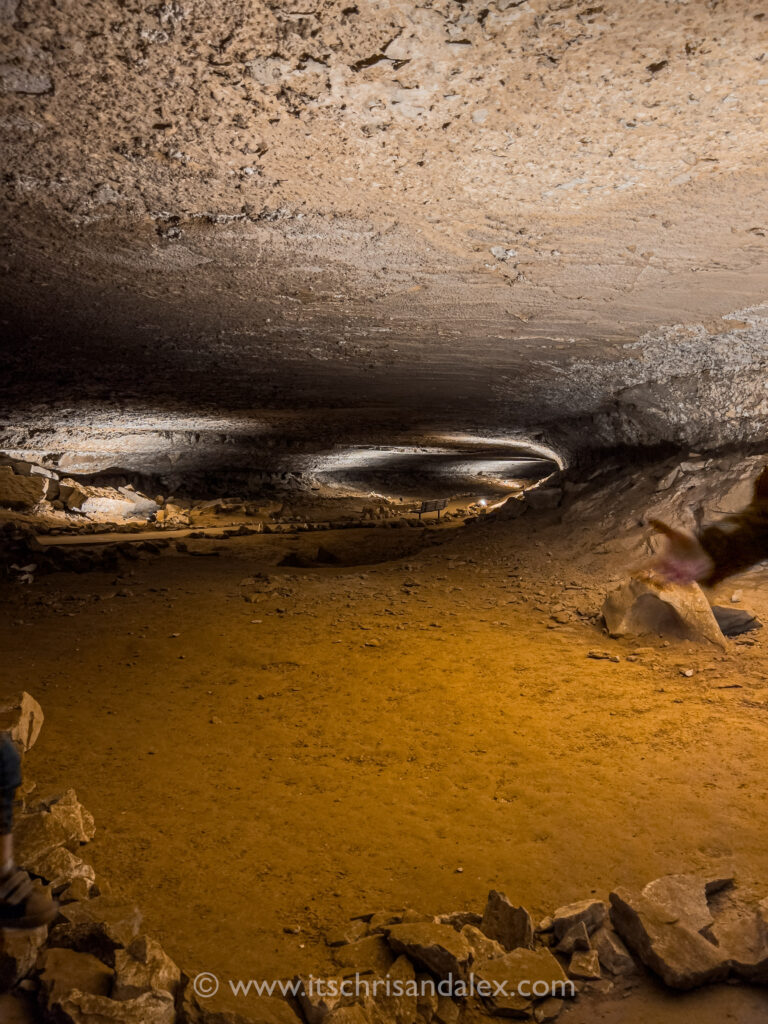
The Snowball Room
Where the gypsum forms “snowballs” all over the ceiling and they used to hold a dining service. Like, a legit sit down service. We would have loved to have a lil snack underground!

Additionally, you’ll get to see where Stephen’s Bishop signed his own name on the cave wall. Also be sure to notice a few narrow, belly-crawling holes you might conquer if you’ve brave enough to take on the Wild Cave Tour.
Lastly, you finish your tour with an elevator ride taking you 250 feet to the surface! Definitely something to brag about long after your visit. In terms of difficulty, we would definitely rate this tour as easy! Cleaveland Avenue was spacious, fairly flat and smooth, and not claustrophobic at all!
Other Tours
Alternatively, some of the other tours offered during our time at Mammoth Cave National Park include the Discovery Self-Guided Tour, Extended History Tour, Gothic Avenue Tour, Great Onyx Lantern Tour, and Wondering Woods Tour. Other times of the year they offer the Domes and Dripstones, Frozen Niagara, Grand Avenue Tour, and the intense crawling tours like the Wild Cave Tour. Those tours are supposed to return in the fall of 2023.
Without a doubt, what really caught our attention was the Accessible Tour, ideal for those with a disability or limited physical mobility. This tour does not require the use of stairs because it includes elevator access so scooters and wheelchairs are allowed. You’ll ride down the same service elevator that concludes the Cleaveland Avenue tour. Truly a wonderful option that affirms that nature and the National Park System can be accessed by all.
White Nose Syndrome
Unfortunately, the most iconic residents of Mammoth Cave – bats – are under threat. The fungus Pseudogymnoascus destructans, or White Nose Syndrome, forms as white fuzz on the nose and hairless body parts of hibernating bats. The disease awakens bats too early into their hibernation causing them to drain their energy stores seeking for food during a time when it’s sparse and many of them perish. The fungus originated in Europe but it’s up for debate exactly how it was introduced to North America. Ever since, it’s been decimating bat populations, killing off nearly 95% of the residents of Mammoth Cave.
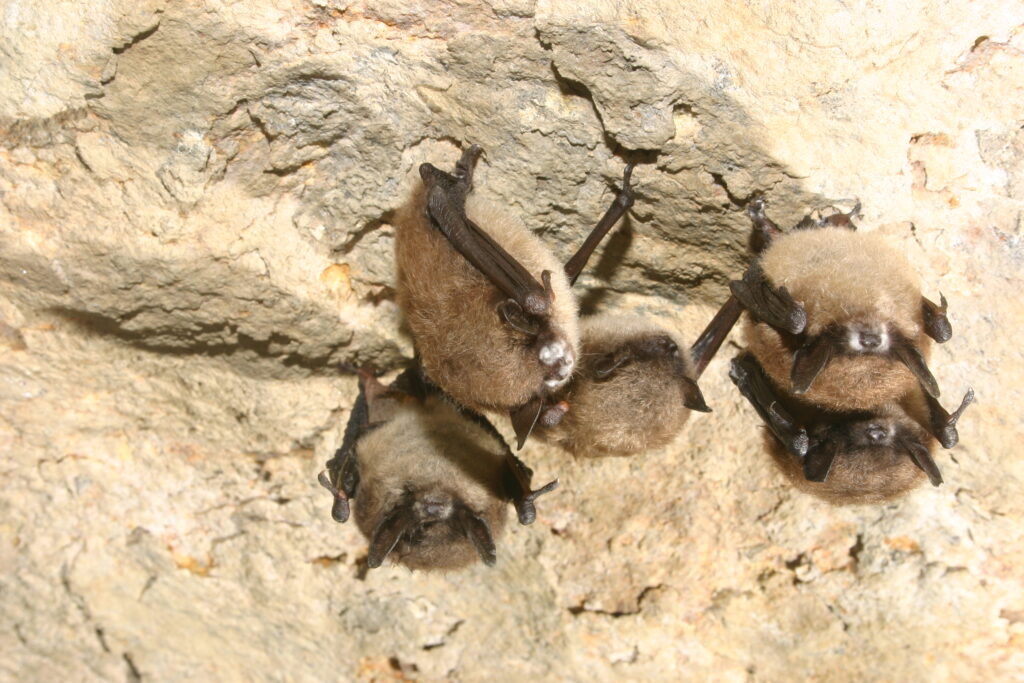
Basically, the most effective measure humans can take is to clean off their shoes upon exiting a cave. Fortunately, the National Park Service has made this step effortless by making it mandatory for guests to step onto soapy, foaming, bio mats any time they exit the cave. This ensures that any fungus you might have picked up on your tour has been destroyed, thus stopping the spread to other cave systems.
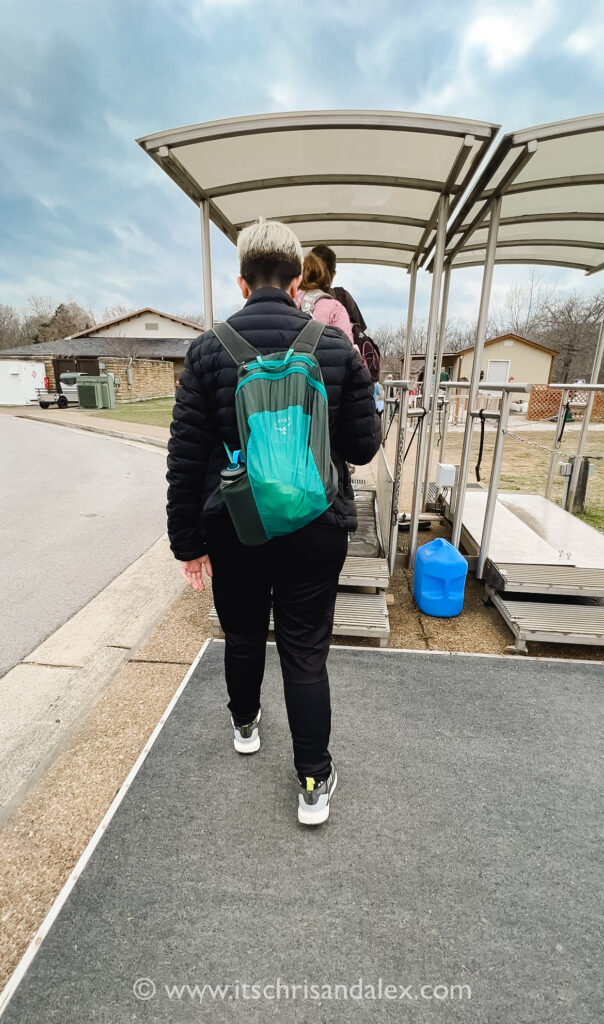
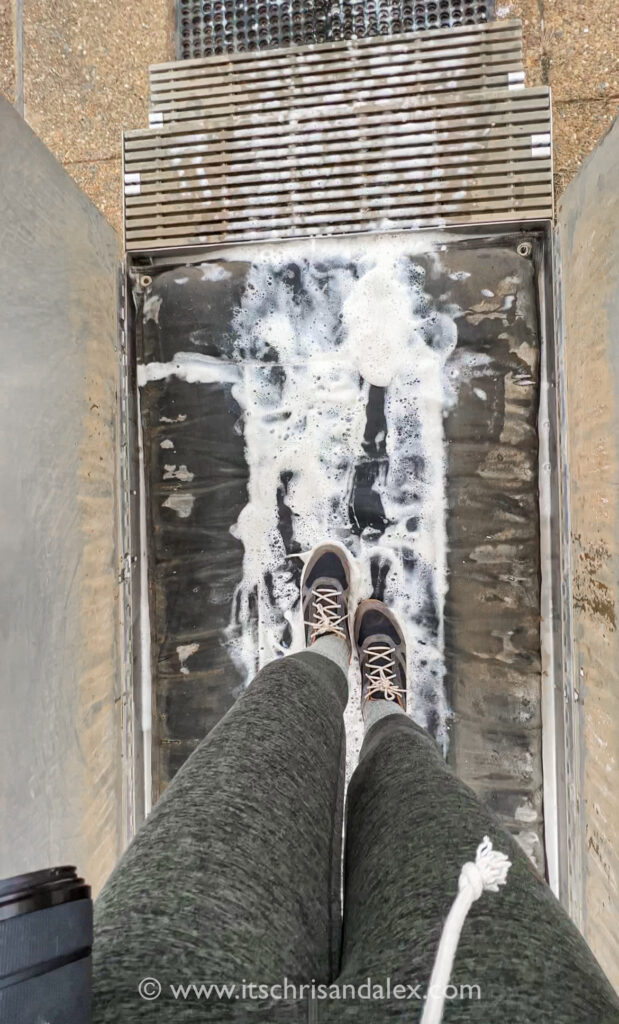
Final Thoughts… Underrated or Overrated?
Even after spending such a short time in Mammoth Cave National Park, we became so enamored. There is just SO MUCH fascinating history and information. We’ve never been able to experience seeing an area inside-out like this before. Seeing the same sites from underground and above ground is just a surreal experience. The cave possesses a quietness that can put you into a meditative state, and there’s not many places where you can experience true darkness. Mammoth Cave is very different than what you’ll see at your average national park so it carved out a special place in our hearts. We are already planning a trip back to spelunk more of the cave!
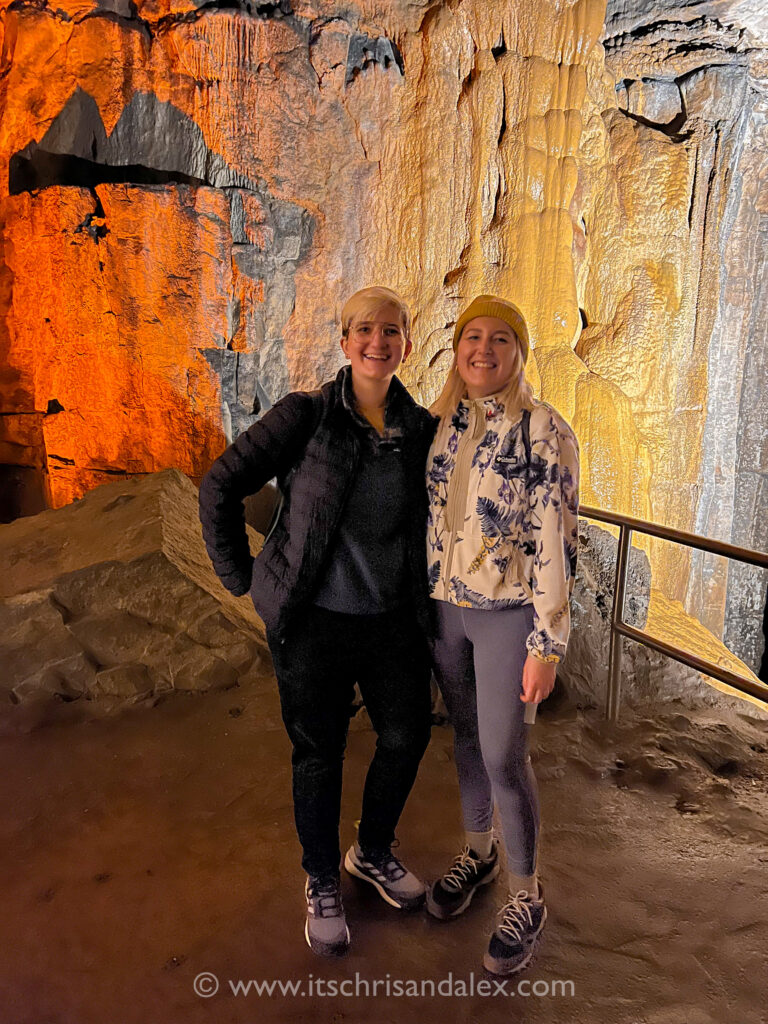
What to Know Before you Go
- Make your reservations as soon as you know your trip dates because tours can book up weeks in advance.
- The cave is a consistent 54° F / 12° C temperature year-round so plan accordingly in the colder and warmer months. The cave will either be colder or warmer than the temperature outside!
- Wear comfortable shoes with grip for the cave tours to have traction.
- No flash photography is allowed as a courtesy to both guests and the wildlife. Would you want your sleep to be interrupted by flashing lights? Yeeeeah, we didn’t think so.
- You can take the time to get long exposure photos if you hang toward the back of the group.
- Alternatively, if you stick toward the front, you’ll have time to take photos while the rest of the group catches up.
- You’re allowed to bring water into the cave with you as well as a backpack, but no tripods or monopods.
- The Visitor Center has a bathroom and refillable water station.
- You know your body and your health better than anyone so take that into consideration before doing any tour. The rangers kept reminding us that it would take several hours to get help in an emergency.
If you have found this guide helpful, we’d appreciate your support by leaving a comment, and by following us on our social platforms so this information can find it’s way into the hands of folks who need it most!
Thank you!
We’re very happy you may want to use our images. However, all photographs in this blog and on this website are originally produced by us unless otherwise stated. We’d love to share but please contact us for permission before using or distributing.

